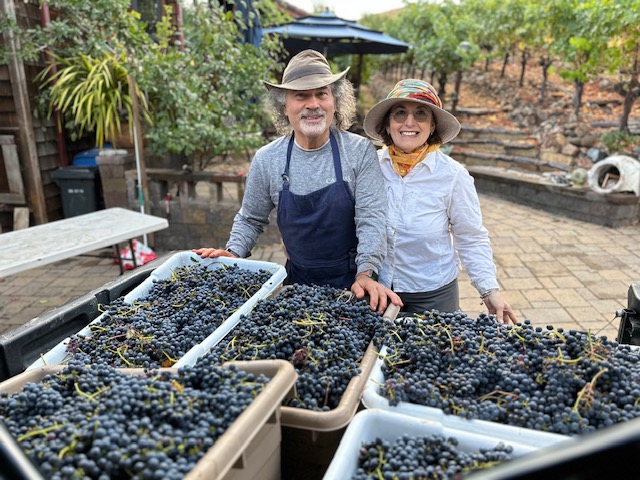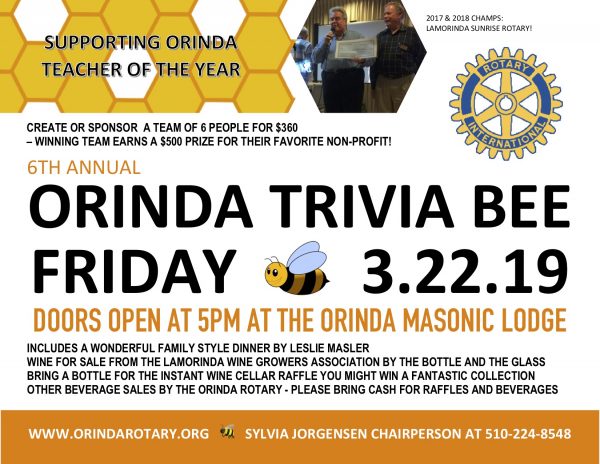
All posts by Administrative ID - 3. page
LWGA General Meeting – April 7th 3pm Lafayette Library and Learning Center – Blind Tasting
Hello Fellow LWGA members,
We are very excited and pleased to inform you about our upcoming April 7, 2019 meeting for the LWGA membership. We are following up on our annual survey and resulting schedule to provide you with useful information and discussions about wine growing and wine making. Our last meeting on January 27th, 2019 LWGA held its annual general meeting at the Hacienda De las Flores in the fire side room and adjacent meeting room. This was a very successful and informative panel meeting discussing viticulture practices and suggestions by a panel of experienced wine growers, managers and owners. Please refer to the link below for a recap if you were not there: https://lamorindawinegrowers.com/lwgas-january-27th-general-meeting-recap/
On April 7, 2019, we will be holding our next meeting at the Lafayette Library & Learning Center beginning @ 3 PM – 6 PM, where we will be asking you to participate by delivering a bottle of you AVA or non AVA wine that you have produced for a blind informal tasting by your peers. Drop off locations for your one bottle per category of your entry wine will be at: (you can enter as many as you like)
Daniel Howsepian’s home; 3345 Hermosa Way; Lafayette
Bill Scanlin’s home; 6 Lois Lane, Lafayette
Bill English’s home; 81 Meadow View Road, Orinda
You will find a cooler at the front door labeled “LWGA” to deposit your entries. Make sure you have your name; wine varietal and source location and year attached. No $ 5.00 per entry fee requested this year. We will take good care of your wine until the event.
or, if you must, but discouraged, since it takes time to organize, you can bring your entries early to the venue on April 7th.
We will be handing out voting forms and collected that day, which will be asking for your favorite choice, second and third choice to be tallied and announced at the end of the meeting.
Winners will be asked in future meetings to address the LWGA membership about your wines, methods and procedures about your grape growing and wine making practices that made you a winner. Should be very informative for the rest of us.
Please review the attached 2019 schedule of events so that you will not miss out on information that you might be interested in.
Look forward to your participation and seeing all of you again on April 7!
Please bring an appetizer to share.
Link to LWGA 2019 Meetings
LWGA Board
Crop Reports needed for Lamorinda AVA Grapes
The Board would like to remind members to submit their total crop harvest of 2018.
The total number of pounds from Lamorinda AVA grapes will be counted in the annual contra costa crop report.
This would be the first year that Lamorinda AVA grapes will be added to the county total.
So, we urge you to send your total harvest amount by March 10th to be added to the crop report… send it to: susan@captainvineyards.com
LWGA Board
AN OPPORTUNITY FOR 3 DAYS/NIGHTS OF LAKE COUNTY WINE TASTING AND FUN FROM FRIDAY JULY 12 THOUGH MONDAY AM JULY 15
One of our members David Hicks is hosting a Lake County weekend wine tasting event in July.
This is being sent out as a courtesy to our membership and the Lamorinda Wine Growers Association is not sponsoring or responsible for the event.
Please contact David Hicks directly if you are interested or have any questions. His contact information is included in the flyer link below:
Link to Event Flyer: David Hicks – AN INVITATION TO WINEMAKERS AND GUESTS
LWGA Board
LWGA’s January 27th General Meeting recap
- The discussion followed the handout which addresses what happens in the vineyard over the course of the year. Specifically, what gets done, who typically does it when you have a vineyard manager and who is involved in the decision making.
- The goal was to facilitate the kind of collaboration between the grower, the vineyard manager and the winemaker that is conducive to a successful crop in terms of yield and quality.
Candidate Statements for the 2019 LWGA Board Election
Below are the candidate statements for the six candidates currently running for election to the Lamorinda Wine Growers Association Board of Directors.
The electronic ballot will be emailed to all voting members shortly after the General Membership meeting on January 27th.
If you are interested in becoming a board member, please contact Carol Haag (carolhaag7@gmail.com) as soon as possible.
Bill English 
My name is Bill English. While I do not grow grapes, I have been an advocate for Lamorinda winegrowing and pretty much specialize in Lamorinda with my winemaking. I have sought to promote better wine growing and better wine making in the AVA. Many of you attended one of the winemaking classes I offered to the membership in past years. I served on the AVA committee headed by Dave Rey and a term on the board.
LWGA’s stated mission is to provide on-going education and support for its members in the areas of vineyard maintenance and management, and winemaking; foster communication and the exchange of information among its members; encourage sustainable practices, resulting in the production of high quality grapes and wine in an environmentally-friendly and socially responsible fashion; promote the Lamorinda community and its status as a winegrowing region, enhancing the marketability of Lamorinda-grown grapes and Lamorinda-made wine; and cultivate a strong relationship with the local community.
I think we have done a pretty good job of some of his, however we have found that defining and implementing the part about providing on-going education and support for its members in the areas of vineyard maintenance and management, and winemaking has been more difficult than meets the eye. I learned this first hand in my previous term on the board. After more thought and discussions with current board members and prospective board member David Hicks, I would like to take another shot at it. We need to recognize the heterogeneous nature of the group and the need to provide more in-depth support to those with interest in learning winegrowing best practices and winemaking practices without forcing technical details on those who don’t have the need or interest. To support this we suggest forming Special Interest Groups for winegrowing and winemaking to take these technical discussions offline from the main meetings while supporting members who want a deeper dive in those areas. We hope that this will not only support current members but attract new members and stimulate past members to rejoin who have interest in these areas.
Hopefully in the process we will enhance the experience of our members and the quality of Lamorinda grapes and wine.
I would like the opportunity to help develop a path forward in these areas by re-joining the board. I request your support.
David Hicks 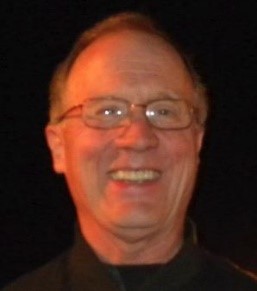
Wine education, grape growing and winemaking history;
Resident of Lafayette since 1978. Lived in Happy Valley till 2000, still live in downtown Lafayette.
Have a vineyard and winery on my property in Lake County where I also have home and where I’ve been making wines since 2007.
From 2003 to 2006 took every viticulture, winemaking and wine sensory course offered at Davis.
Planted my vineyard myself on my property in Lake County in 2004. Harvested and made first vintage in 2007.
Starting in 2010 began acquiring grapes from other Lake County growers. Have made 8 red varieties, 3 white varieties, Port, late harvest Sauturn, and Brandy. Have also made wonderful Chard from Moraga grapes from Jon Leutneker’s vineyard. I do all the vineyard tending and winemaking myself. Seek help from the Davis extension as needed to stay on top of issues and developments in the industry. Entered many wine comps, wining several Best of Show, numerous gold, and other awards.
How I might contribute to the Lamorinda AVA membership as a board member?
The AVA is passing into a new faze as a result of the founding members achieving the goal of getting the AVA established. A big task for which I’m sure all members are most appreciative. For the AVA to continue to prosper and grow, ideas need to be contributed and listened to from all who wish to put them forth. As a quasi outsider to the AVA I still have a lot to learn about where things are now and how the members and leadership sees things moving forward.
On a one to one basis I am willing to consult [for wine and food only] on winemaking to members that are growing their own grapes and making their own wine. Additionally I feel it’s important for all board members to consult among themselves and concurrently and consistently seek input from the general members regarding what the direction of the AVA should be. Leslie took a survey a while back on many of these issues and I will need to become familiar with those results.
Moving any organization from start up to steady state is no easy task. I have had experience doing this type of thing in my career in the Software Engineering Consulting business. There seems to be a lot to do regarding the future of the AVA and I’m willing to contribute to that process.
Thank you,
Daniel Howsepian 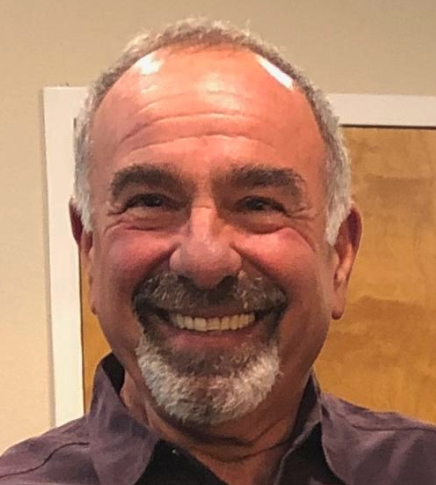
Raisin d’être Vineyard; (Est. 2012) 350 vines total; 275 Vines of Cabernet Sauvignon and 75 Vines of Merlot
3345 Hermosa Way
Lafayette, CA 94549
DOB; 02/28/52; Paris, France
Brooklyn Technical H/S: Electrical Engineering
Pratt Institute; Electrical Engineering
City College of NYC @ Queens; BA in Economics;
RE Finance Accoc @ So Lake Tahoe CC
Resident of Orinda since 1985 – 2011;
Resident of Lafayette since 2011;
Married with three children;
My wife, Annemieke, works at the Dutch Consulate in SF and owns a Jazzercise franchise in Pleasant Hill;
All kids went to: Del Rey; OIS; Miramonte H/S;
dh Structures Inc; General Building Contractor/Developer in Lamorinda & East Bay; Currently Retired with new career as wine grower/maker
Served as Secretary; then Treasurer, then President of the Orinda Park Pool; 1988-1994.;
Working as NSP (National Ski Patrol) Ski Patroller @ Squaw Valley since 1998 ;
Certified First Responder and an Outdoor Emergency Technician;
Secretary of the Squaw NSP for two years;
Squaw Valley Ski Patrol Testing & Training Coordinator for two years;
Squaw Valley Ski Patrol Patrol Leader & Chair of Board of Directors for six years;
Received National Appointment by NSP in 2011;
Currently on Board of Directors of the Squaw Valley NSP;
Currently on LWGA Board for the last two years
We moved from Orinda to Lafayette in 2011, downsizing once our kids were on their own. Found a great house renovation project in Lafayette with vineyard potential which I had in mind for many years.
Joined the LWGA in 2012 and have been very happy & proud to be a founding member of the Lamorinda AVA.
It has been a pleasure to be on the board for the last two years! Together, we have been able to;
– Fend off an attempt by the Moraga planners to dramatically impact our ability to grow grapes in Moraga;
– Reduced our overall spending budgets by reducing our insurance expenses;
– Created an outline for the development and access of grape growing, winemaking, resource and educational opportunities for the membership to use and enjoy;
– Enthusiastically supporting the LWGA AVA brand through promotions; exposure; activities to educate, taste and to guide our members to elevate their wine growing and wine making outcomes to earn a high level of success and recognition in the region;
– Providing a warm social interaction between all members of the organization, by providing a regular schedule of informative and social activities throughout the year.
– And many other achievements as well.
I am enthusiastic about our vineyard, enjoy the wine making and socializing with the LWGA and all that it brings to our lives. I am interested in continuing my participation with LWGA Board and would like to see it grow in the future to level it deserves.
Hope to have your continued support!
Thank you.
Larry Thal 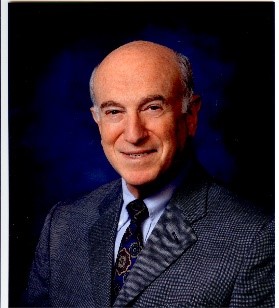
I am currently serving as LWGA Secretary. I have considerable board experience and look forward to continuing to serve the Lamorinda Winegrowers’ Association and its members, if elected to do so.
My wife, Esther, and I planted approximately 2,300 vines in 2010 and had our sixth harvest this past year. Our varietals consist of Cabernet Sauvignon, Merlot and Sauvignon Blanc. Thal Vineyards, LLC is bonded with an O-2 license.
I am retired, having done so for the third time (United States Air Force, private practice of optometry and Clinical Professor and Assistant Dean University of California). Some of my other board experience includes serving as President of the California State Board of Optometry on five occasions and serving two years as President of the California Optometric Association. I recently completed two terms on the board of an independent private school in the East Bay, and for over 20 years I have served as president of two homeowners’ associations.
Leslie Ward 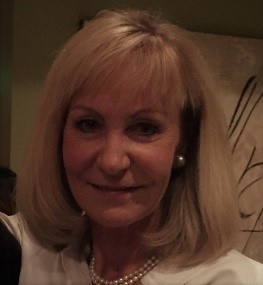
Education: B.S. Landscape Architecture & Environmental Design, California Polytechnic, SLO, CA. LEED Accredited Professional since 2004. Over 25 years of educating communities, construction building trades, and design teams on the benefits and savings of green/sustainable design and building practices.
Relationship to LWGA: One of the founding members of the LWGA (2005). Past posts with LWGA include President of the Board (2014); Board Member (2013 – 2018); Board Member of the Orinda Chamber of Commerce (2016 – 2019) and Liaison for the LWGA. Occasional Presenter to the local Rotary, Historical Society and Garden Clubs about the LWGA vineyards and history of winemaking and grape growing here; frequent donator of wine and wine tastings to local schools, hospitals and other charities and non-profits.
Personal: Our Construction firm, Sausal Corporation builds schools, fire stations and public buildings throughout NO. CA; our Son Josh just took over last year as President. Successful and thriving Los Arabis Vineyard Pinot Noir (1500 vines in Lafayette) planted in 1999 and commercially sold throughout Lamorinda.
Tim Wedlake 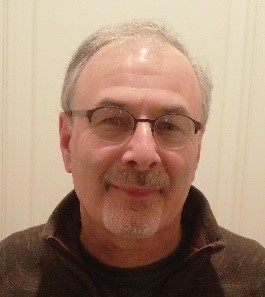
I have served as the Treasurer for LWGA since 2006, and would like to continue for another term.
During that time I have collected dues, maintained the books of account, handled the checking account, dealt with tax filings, and provided financial reports.
I am committed to the long-term success of LWGA, in particular in providing educational and interesting experiences for members, and in leveraging our AVA status for the good of the organization and the community.
Thank you for your consideration and vote.
Cab grapes available now!
Our member Peter Clark has 500-800 pounds of Cabernet Sauvignon grapes in Lafayette available free to whoever wants them.
The brix are about 25 now so they are ready.
Please contact Peter with any questions or to make arrangements.
Peter Clark's contact info: pkclark@ucdavis.edu 925-330-9377
Free Webinar: Preparing the vineyard for winter
|
|||||||||||||||||
|
|||||||||||||||||
|
|||||||||||||||||
|
Next LWGA Meeting – Sunday, September 30 – Red Wine Winners and Winemaking Advice
Hello Lamorinda Winegrowers, Winemakers and Merry Wine Folk! By now most everyone is probably busy with harvest, planning for harvest, or planning to drink harvest wines in the future.
On this topic of wine, wine work and wine fun, the next LWGA meeting will be Sunday, September 30, 3pm to 6pm at Larry and Esther Thal’s residence 1155 Laurel Drive, Lafayette. (directions are at the end of this email)
This will be a fun and informative meeting. Some of the red wine winners from our AVA Celebration earlier this year will be pouring samples of their winning wines and explaining how the wine was made. Bring any and all questions you have about winemaking to this meeting, as our winning wine makers will have valuable answers, suggestions and opinions – and the meeting will be structured to encourage open dialogue, so other winemakers can provide their suggestions as well.
Please bring a bottle of wine, a wine glass or two (for tasting multiple wines) and an appetizer or light entrée to the September 30th meeting.
Also mark your calendars for our Annual Lamorinda Winegrowers Holiday Party, which will be on Thursday, December 6, 2018 in the evening. This will be a real deal festive party, so you won’t to miss it!
Looking forward, our next meeting will be on Sunday, January 27, 3pm to 6pm. At this meeting we will be discussing viticulture and sharing information that may help improve the quality or quantity of your fruit.
DIRECTIONS TO THE THALS’, 1155 LAUREL DRIVE, LAFAYETTE (925) 283-7434
From San Francisco or the East Bay, take Highway 24 East toward Walnut Creek through the Caldecott Tunnel. Take the Central Lafayette/Oak Hill Road exit (the sixth exit after the Caldecott Tunnel). At the bottom of the Central Lafayette exit, take a left onto Oak Hill Road and go back under the freeway. At the top of the hill is a yield sign; turn right onto Deer Hill. At the second intersection is a stop light. Going right puts you back on Highway 24 going West; left is Laurel Drive. Turn left. We are at the top of the hill. The entrance to the house is approximately two-fifths of a mile after you turn onto Laurel. The entrance is gated. Push the intercom button on the left side of the gate. Go to the top of the driveway, after bearing to the left — you’ll find plenty of parking between the two garages.
From Sacramento or San Jose take Highway 680 toward Walnut Creek and then Highway 24 West toward Lafayette/Oakland. Take the Central Lafayette exit (the second exit after Highway 680). At the stoplight is Laurel Drive. Go straight. We are at the top of the hill. The entrance to the house is approximately two-fifths of a mile after you turn onto Laurel. The entrance is gated. Push the intercom button on the left side of the gate. Go to the top of the driveway, after bearing to the left — you’ll find plenty of parking between the two garages.
A Walk Alongside Ripeness
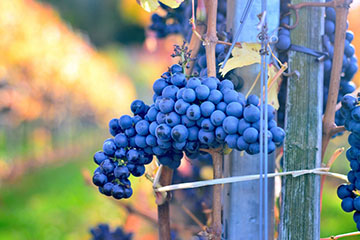 Written by Alex Russan
Written by Alex Russan
How ripe your grapes are when picked is one of the most important factors in determining what your wine will taste like. Delicious wines of drastically different styles can be made from the exact same vines, simply as a result of harvest time (viticultural practices make a big difference as well). From a consumer perspective, you can see production trends these days shifting from the very ripe styles of the 90s and 2000s (big, lush, powerful wines), to much less ripe offerings (lighter, fresher, elegant wines), with many of these lighter wines being produced from the same vineyards that their bigger counterparts come from. As a home winemaker (and often as a commercial one), if you are purchasing grapes, pick time may be the one factor in the vineyard you can control, and, thankfully, it is a huge one!
This article is a journey in the life of a grape from under- to over-ripeness. From bright fruit to dark, earth to opulence, pyrazines to field oxidation. All grapes develop in their own ways, so to an extent these are generalizations that may not always be the case for all grapes of all sites, but it is a solid guide, aiming to help you harvest at the moment that will be most parallel with your stylistic goals as a winemaker.
Let’s get something out in the open here: The concept of ripeness is a moving target, and, quite frankly, a bit of a mess! Ripeness does not progress in a simple linear fashion. All of the different factors that determine ripeness develop somewhat, or entirely, independently of one another, and each will have a different pace every year. Vineyard management practices will also affect the pace of many factors. Sugar levels, acidity levels, and grape taste are the most common parameters used to decide when to pick, but there are many more — 20 worth considering, according to the insightful Winegrape Berry Assessment Handbook by Winter, Whiting, and Rousseau!
If you’re growing your own grapes, you’re able to pick at will, and micromanagement of any and all ripening variables is an option. For the rest of us who are purchasing grapes, however, Brix and, perhaps, acidity levels will likely be the only indicators of ripeness we will receive prior to requesting a harvest date. That being the case, understanding the grape variety and site is crucial to understanding how “ripe” the grapes will be (and how close they will be developmentally) relative to those numbers — which, to be clear, are very important numbers, but do not tell the entire story.
For example, a Chardonnay picked at 21 °Brix in a hot climate will be very different than that of a cool climate: The hot climate will be well into tropical aromatics with lower acid, whereas the cool climate will remain on the stony and citric side and contain more acid. In the same vein, a Chardonnay picked at 3.1 pH in the hot climate would likely be grossly underripe and green, with very low sugars, whereas the cool climate may be well developed with reasonable sugar levels. Understanding where the different ripening variables will be relative to one another for a grape in a specific climate is paramount to picking at the moment that will lead to the wine you want.
The same goes for vintage variation, although you cannot completely control the pace of the many ripening variables (and vertical tastings would be boring if you could!), you can choose to pick earlier or later, aiming to keep the wine in line with your style goals and for what would be best for that vintage.
A factor I rarely hear discussed, and one I consider of the utmost importance to pick decisions, is the stage of aromatic development of the grape at the time of picking. This, of course, is not a factor that can currently be measured and is also one of the only factors that cannot be directly manipulated post-harvest. Brix, acidity levels, tannin, and color can all be measured, as well as manipulated after harvest. Beyond what the grape provides, aromatics can only be imprecisely tinkered with via yeast selection, added to with oak, or, especially in whites, use of enzyme preparations high in beta-glucosidases. The type of aromatics a grape will yield change tremendously during ripening, and, I believe, so does the degree to which a grape can express its individual terroir.
Of course, matching an appropriate grape variety to a vineyard site is critical in growing grapes in which ripeness characteristics will come together harmoniously in most years. In vintages or areas where they do not, the aforementioned manipulations or additions may be necessary.


